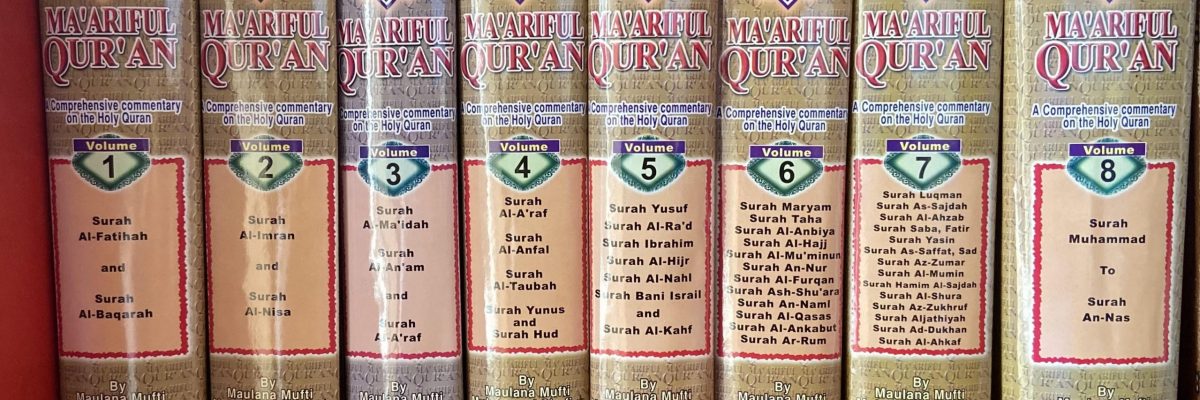| How should one perform witr prayer?
Regarding your first question, Imam Abu Haneefa (ra) says that the witr salah consists of three rakaats with only one salaam, whereas the other Imam’s (ra) i.e. Imam Shafee (ra), Imam Ahmed (ra), Imam Mailik (ra) say that the witr salah is between 1 to 7 rakaats. Generally, they perform the witr by reading 2 rakaats with one salaam and then read another rakaat separately with one salaam. (Darse – Tirmizi p215 V.2) However, it should be borne in mind that the most preferable/ desirable view according to Imam Malik (ra) is that witr consists of 3 rakaats and the 1 rakaat practice is not acted upon by him or his followers. (Muatta Malik p110) All the four Imam’s have their own proofs from hadith regarding their respective views, but however, in this masala, the Ahnaf’s view has been preferred upon for the following reasons; (Darse Tirmizi p235 V.2) 1. The Prophet of Allah (swa) read 3 rakaats of witr. In it he read chapters of mufasil. He read 3 chapters in each rakaat and in the last rakaat he read Qulhu AllahuAhad. (Tirmizi 106 V.1) 2. The Prophet of Allah (swa) read in the witr salah Sabihis ma- rabikal Ala Waqul ya ayuhal Kafiroon and Qulhu AllahuAhad. (Tirmizi P.106 v.1) 3. I asked Hazrat Aaisha (ra) with what chapters did the Holy Prophet (saw) used to read his witr, she replied he used to read Sabihis ma- rabikal Ala in the first rakaat and Qul ya ayuhal Kafiroon in the second rakaat and Qulhu AllahuAhad in the third rakaat. (Tirmizi P.106 v.1) All these hadith’s are pointing towards the fact that witr salah is 3 rakaats and that it was performed with one salaam. If it were performed with two salaams, the narrators (ra) would have mentioned it, as this was not the usual practice. 4. Hazrat Aaisha (ra) was the mos closest person to the Holy Prophet (saw) and she narrates that the Holy Prophet (saw) read 3 rakaats of the witr salah and there isn’t a mention of the two separate salaams. Abu Salahma (ra) asked Hazrat Aaisha (ra) how the Holy Prophet’s (saw) salah was in Ramadhan. She replied, the Holy Prophet (saw) did not exceed in Ramadhan or outside Ramadhan more than 11 rakaats. He read 4 rakaats and do not ask me of its beauty or length, then he read 4 rakaats and do not ask me of its beauty or lengthand then he read 3 rakaats (witr). (Bukhari p154 V.1)
Can one join the taraaweeh congregation with the intention of performing ones Esha prayer?
2. In regards to the second question the answer is that one would not be permitted to join the tarawih with the intention of the Esha prayer. This is simply because a person who intends to read a Farz prayer cannot follow a person who intends to read a nafl prayer. Therefore ones prayer/ salah will not be done. (Raddul Muhtar p 324 V.2) Furthermore the Holy Prophet (saw) has said; ‘The Imam is made so that he can be followed.’ (Bukhari vp.150 v.1) Hence, if the Imam and the follower’s intentions are different, then the follower cannot follow the Imam. Regarding your question, whether tahajjud salah can be performed with jammat in the last 10 days of Ramadhan or not. Some Hanafi scholars like Hazrat Hussain Ahmed Madani (ra) would hold tahajjud salah with jamaat in the month of Ramadhan. Other Hanafi Jurists disagree and remain firm on the original view of the Hanafi school of thought that nafl prayer held with jammat is makruh. According to the Hanafi Madhhab, it is disliked (makruh) to offer Tahajjud and other Nafl prayers in congregation (jama’ah), except for the Tarawih prayer (in Ramadhan), eclipse prayer (kusuf) and drought prayer (istisqa). Allama Ibn Abidin (ra) has said: “If a habit is made of offering Nafl prayers in congregation, then it will be regarded as an innovation (bid’a), hence Makruh.” (Radd al-Muhtar p.500 v.2) The reason for it being disliked is that the Holy Prophet (saw) encouraged us to read nafl prayers at home. Zaid ibn Thabit (Allah be pleased with him) narrates that the Messenger of Allah (Allah bless him & give him peace) said: “O people! Offer your prayers at home, as the most virtuous prayer for an individual is that which is offered at home, except for the obligatory (fard) prayers.” (Nasaai) This is also, more or less the ruling in the Maliki Madhhab, i.e. it is disliked to offer nafl prayers in congregation. According to the Shafee mazhab it is sunnah that Nafl prayers are not offered in congregation. However, if one did offer them in congregation, it will be permissible without it being Makruh.” (Mugni p.333 v.1) According to the Hanbali Madhhab, it is totally permissible to offer nafl prayer in congregation. (Al-Mawsuul-Fiqhiyah& Mugni p.333 v.1) However, the practices of my noble and respected teachers was that in the month of Ramadhan if a few brothers or the mutakefeen’s gather in the mosque and read their tahajjud salah with Jammat then there will be nothing wrong with it. After all it is the month of Ramadhan and one should strive to do as much good deeds as possible. Mohammed Tosir Miah Darul Ifta, Birmingham. |

